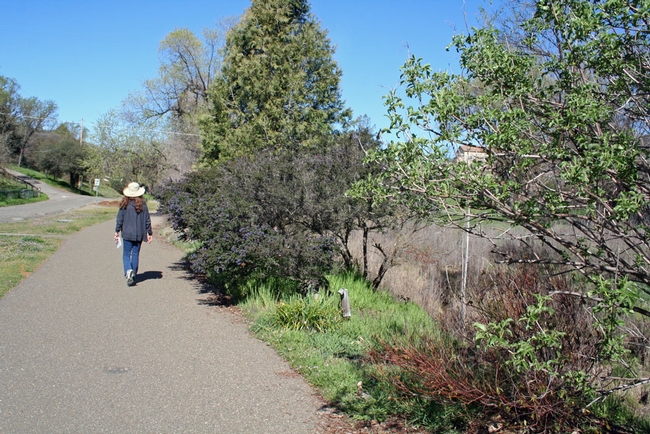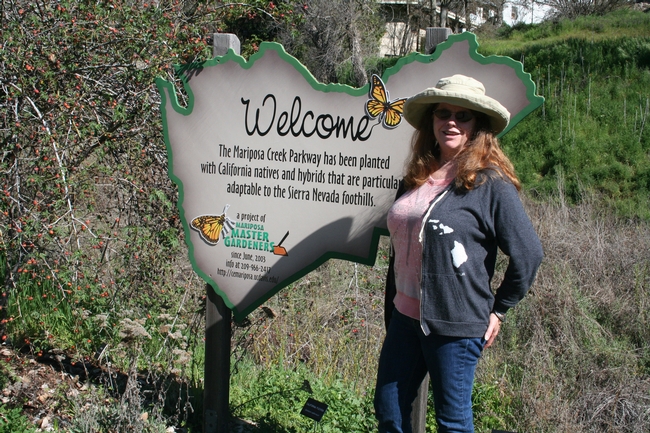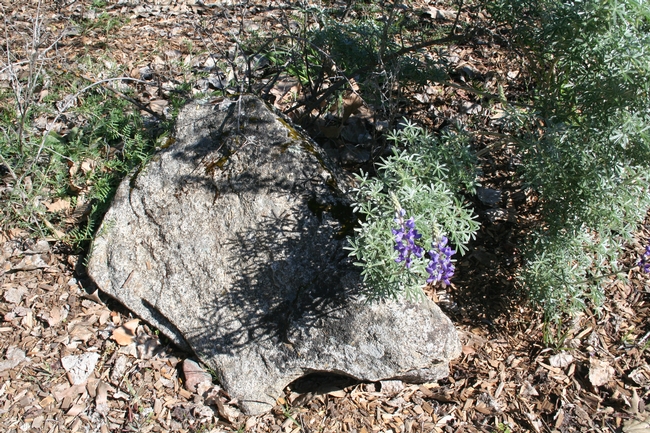Posts Tagged: native plants
Citizen Scientists Invited to Join the Seed Pile Project
Want to join the 2022-23 Seed Pile Project, a community science initiative by Miridae Living Labs of West Sacramento and UC Davis faculty that aims...
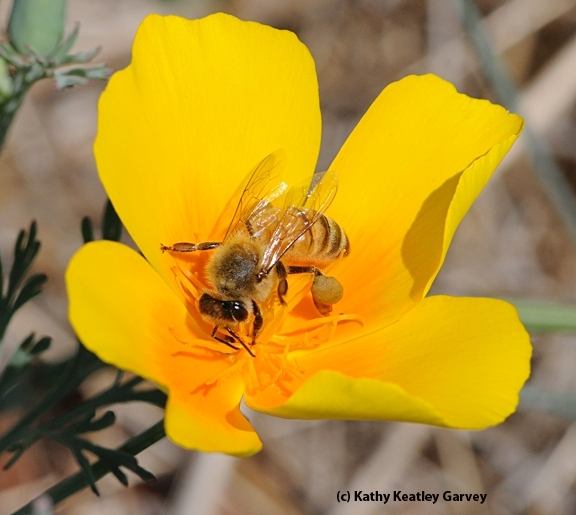
A honey bee foraging on a California golden poppy, the state flower. (Photo by Kathy Keatley Garvey)
Tropical Milkweed Doesn't Deserve the Bad Rap
Fact: Milkweed is the host plant of the monarch butterfly, Danaus plexippus. Fact: Without milkweed, no monarchs. Yet a milkweed species...
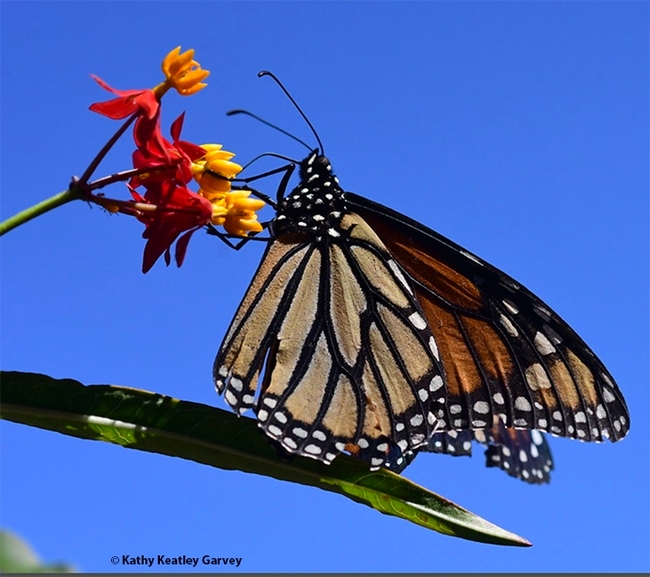
A monarch nectaring on tropical milkweed, Asclepias curassavica.(Photo by Kathy Keatley Garvey)
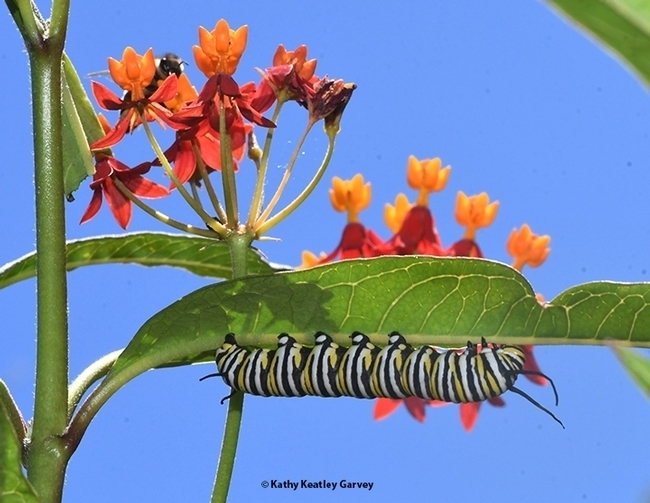
A monarch caterpillar foraging on tropical milkweed, Asclepias curassavica. (Photo by Kathy Keatley Garvey)
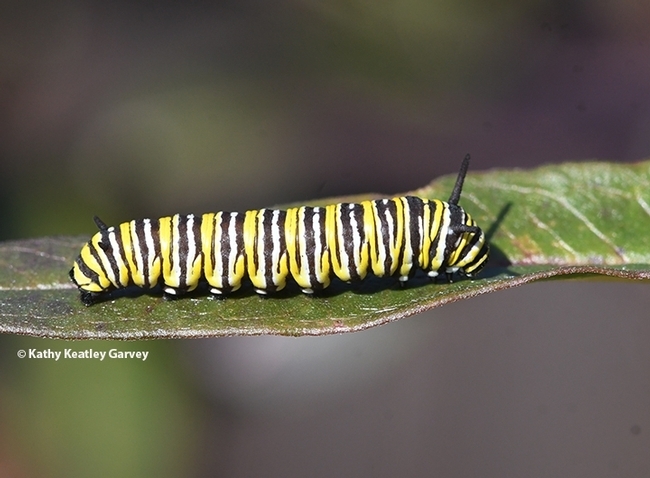
Close-up of a monarch caterpillar. (Photo by Kathy Keatley Garvey)
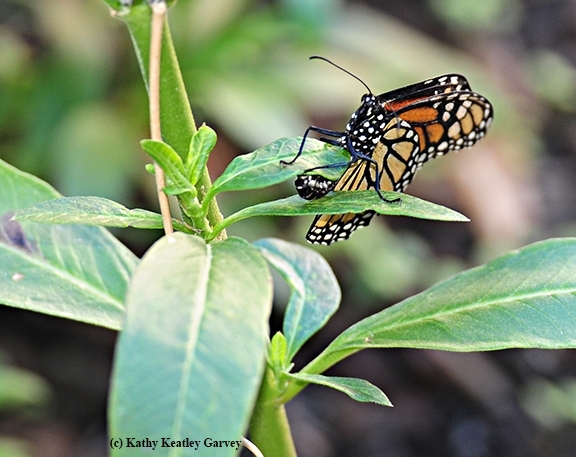
A monarch laying an egg on a tropical milkweed. (Photo by Kathy Keatley Garvey)
The Big 43: The California Native Plants, Plus One, Studied in UC Davis Research
When pollination ecologists from the Neal Williams lab at the University of California Davis--Ola Lundin, Kimiora Ward and Professor...
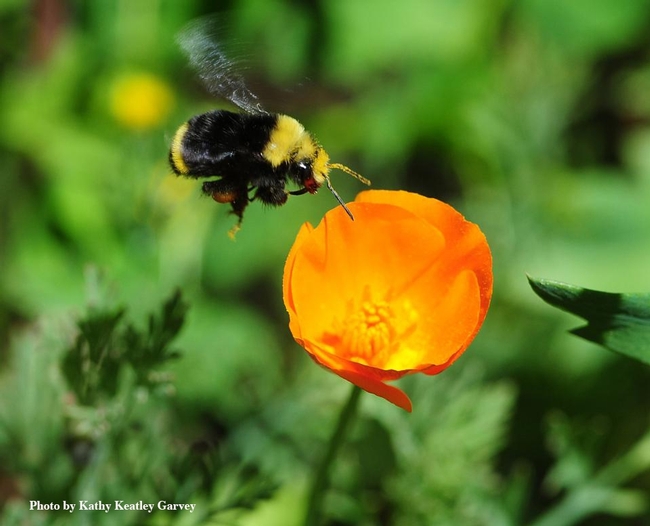
A yellow-faced bumble bee, Bombus vosnesenskii, heading toward California poppy,Eschscholzia californica. (Photo by Kathy Keatley Garvey)
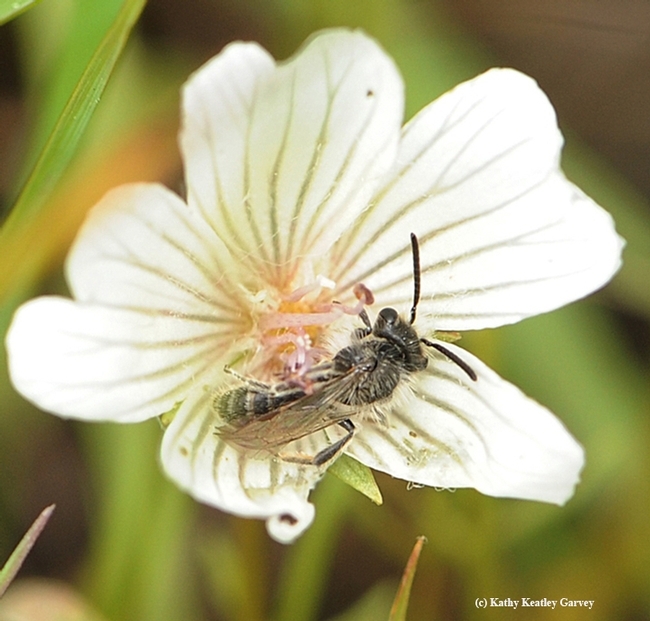
Andrena (mining bee) on meadowfoam, Limnanthes alba. (Photo by Kathy Keatley Garvey)
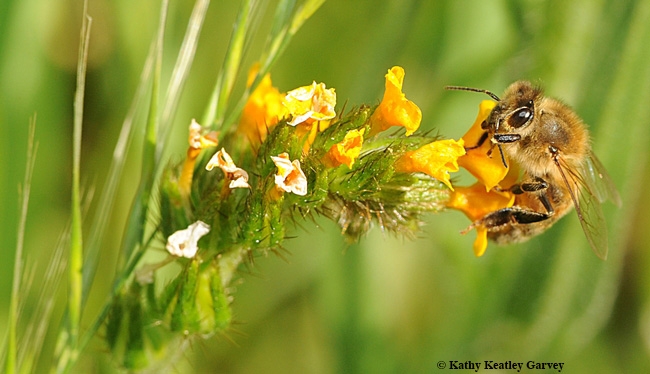
A honey bee, Apis mellifera, on fiddleneck, Amsinckia. (Photo by Kathy Keatley Garvey)
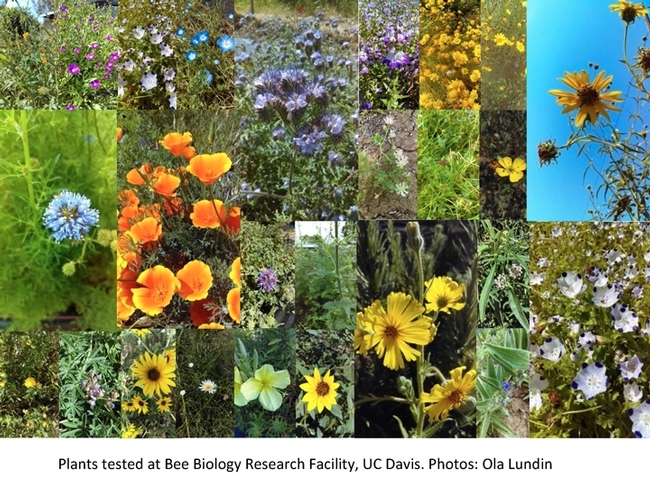
Native plant species (Photos by Ola Lundin)
Take a short jaunt in Mariposa to see a treasure of California native plants
A half-block from the highway that brings thousands of tourists to Yosemite National Park each year, the UC Agriculture and Natural Resources (UC ANR) Master Gardeners landscaped a short and scenic hiking path that provides the perfect break on a long drive.
The quarter-mile-long Mariposa Creek Parkway runs parallel to State Route 140 (Main Street in downtown Mariposa) on Stroming Road between Eighth and Sixth streets. Along the path, the Master Gardeners created the California Native Plant Demonstration Garden, which includes dozens of beautiful, drought-tolerant plants labeled for easy identification.
The path, which follows a short stretch of Mariposa Creek, was designed to increase appreciation for native flora and encourage Californians to consider “going native” in their own landscapes, said Kris Randal, coordinator of the Master Gardener program for UC ANR Cooperative Extension in Mariposa and Merced counties. Water shortages associated with the ongoing California drought are also driving interest in landscaping with native plants.
“Many natives are drought-tolerant, adapted to local soils, and rarely need fertilizers or pesticide treatments,” Randal said. “With some care and irrigation to get them started, they create a beautiful natural setting that brings pollinators and wildlife into your backyard.”
Randal was an advocate for native plants even before joining UC ANR. As a community educator for the Resource Conservation District in Mariposa County, she coordinated the transformation of a weedy parking lot around the district's building on the Mariposa Fairgrounds into a beautiful display of plants and wildflowers that occur naturally in the surroundings.
She did the same thing in her own Mariposa yard, bringing in and nursing the plants that flourish in natural areas.
“After I planted native brush and wildflowers, it was a joy for me to watch diversity come into my yard. Plant it, and they will come,” Randal said.
Randal suggests growing California native plants, even over native plants from other parts of the world with Mediterranean climates – such as Australia, Chile and South Africa – which also are often recommended because of their low water needs.
The California natives, she said, support local wildlife and pollinators, have historical and cultural importance, and save time and expense while adding beauty and ecological health to the environment. Native plants attract native bees, butterflies and hummingbirds and provide seeds, nuts and fruits for other native birds and wildlife. Native plants promote soil health by supporting flora and fauna that flourish underground.
“There's all kinds of magic going on under the soil,” Randal said.
As a first step toward converting to native landscaping, Randal suggests finding a natural area close to home and visiting it every few weeks to see what is growing, and what is blooming. Take notes and consult a plant guide or the Internet to identify the plants.
“It sounds like a lot of work, but it's not,” Randal said. “It's fun.”
This task is particularly convenient for Mariposa County residents, where the UC ANR Master Gardeners planted a wide array of beautiful native plants in one place.
Under the auspices of UC ANR Cooperative Extension, Master Gardeners are trained by UC ANR academics in research-based and sustainable gardening and landscaping practices. They become volunteer educators for non-commercial gardeners. In Mariposa County, a significant amount of volunteer time goes into tending the native plant garden.
In early spring, one of the first deciduous shrubs to leaf-out on the pathway is California buckeye. The leathery, pear-shaped fruits contain seeds that are easily sprouted, or they can be used in dried flower arrangements.
Along the trail, visitors will find California fuchsia, known by many as a natural hummingbird feeder. Blue elderberry, columbine and manzanita also attract hummingbirds to the demonstration garden.
Randal points out soap root, which looks like a grouping of long spindly leaves growing from the ground. Native Americans used pulp from the bulb to make a soapy lather, and they used the fibrous and hairy husks of the bulb to make small brushes to whisk out acorn shell debris from grinding holes.
One of Randal's favorite natives, she said, is a low creeping sage. The fragrant plant forms a low mat as big as 10 feet across with blue-violet flowers May to June. “This is great in a pine forest where it will get afternoon shade,” Randal said.
A lovely shrub known as Ceanothus blue jeans produces profuse powder-blue clustered flowers. The tall evergreen provides a colorful show of flowers with no care or irrigation. Western redbud explodes with magenta blossoms in the spring. Native Americans used the branches for basket weaving and made a red dye from the bark. Red Twig dogwood produces beautiful white blooms in early summer, and its bright red branches are a unique display in the winter.
“Growing native plants help you appreciate your surroundings and feel more connected to the natural world,” Randal said. “It attracts more life and that's why many of us garden.”
An initiative to maintain and enhance healthy families and communities is part of the UC Division of Agriculture and Natural Resources Strategic Vision 2025.
Author: Jeannette Warnert
Spring at The Gardens at Heather Farm
During my teenage years, the head lifeguard at the pool that I volunteered at, used to bring a group of us teenagers to picnic and swim at Heather Farm in Walnut Creek each summer. As such, I have always associated Heather Farm with those memories, not realizing that Heather Farm also included a beautiful 6-acre garden, which I had the pleasure of visiting recently.
Like The Ruth Bancroft Garden that I blogged about recently (also in Walnut Creek, just minutes from The Gardens at Heather Farm), Heather Farm Park and The Gardens at Heather Farm were named after the original ranch located on the very site, and fancifully, the ranch owners' prized race horse, King Heather. There are 20+ gardens of varying sizes and themes in all, managed completely without the use of pesticides. To give you an idea as to what you should expect to see and experience, the following is a list of gardens/plots on site: The Ruth Howard Entrance Garden, Native Plant Garden, Diablo Ascent Garden, Tree Grove, Ash Tree Alley, Stroll Garden, Meadow Garden, Heritage Garden, Mother’s Garden, Black Pine Garden, Ward Garden, Cowden Rose Garden, Waterfall Garden, Rockery, Butterfly Garden, Mural Garden, Children’s Garden, Riparian Garden, Water Conservation Garden, Sensory Garden, and the Blue Star Memorial Garden.
Some highlights of The Gardens include the very beautiful and showy Cowden Rose Garden that takes center stage the moment you enter The Gardens (Tip: now is a great time when everything is in bloom!). Equally beautiful, but more understated, is the shade garden. There is a section for California native plants, a tree grove, and a small patch which integrates edible plants with ornamentals—always one of my perennial favorites.
With how beautiful and well-maintained The Gardens is, it is hard to believe that the grounds are managed by a volunteer-based nonprofit employing a small part-time staff. It would seem that an army would be necessary to maintain the site as well as they do.
Now is a wonderful time to visit as most everything appears to be in bloom. So on one of those warm afternoons where you are at a loss for ideas of what to do, where to go, consider packing a picnic lunch and visiting The Gardens at Heather located at 1540 Marchbanks Drive, Walnut Creek, California. For more information, see http://gardenshf.org/.
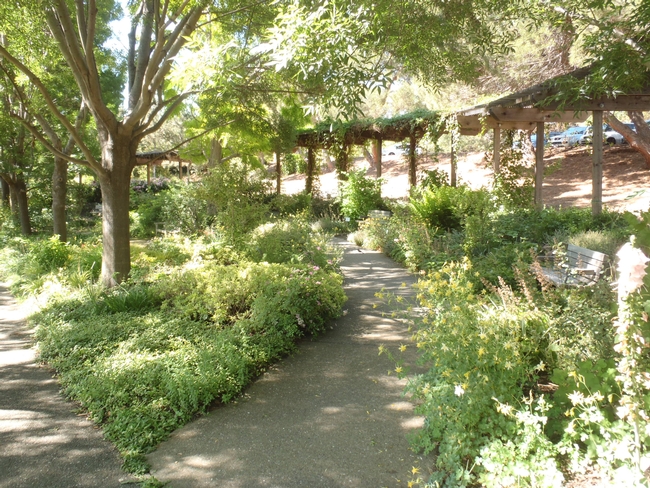
photos by Betty Homer
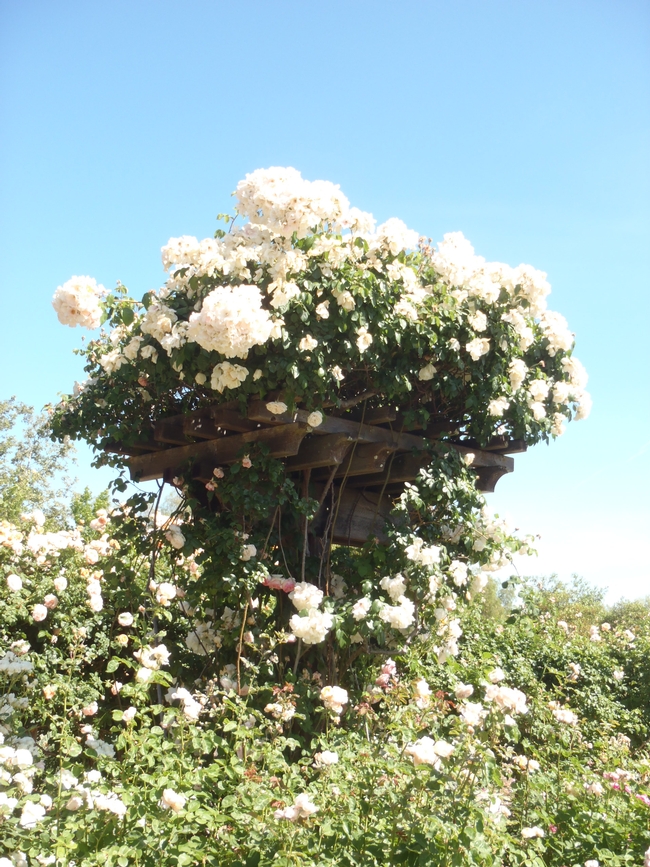
P5121506
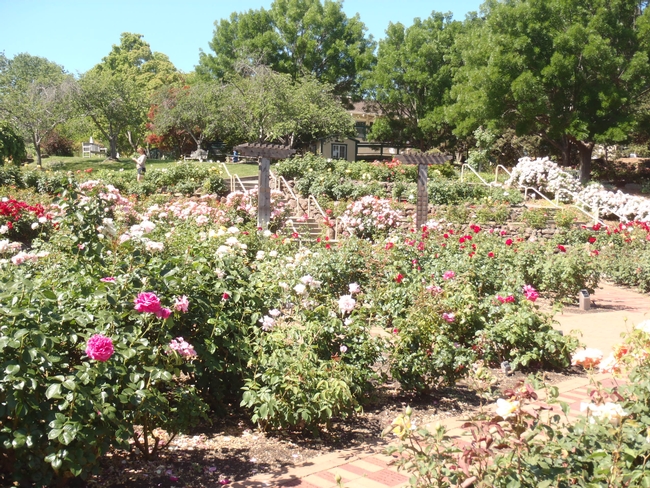
P5121508
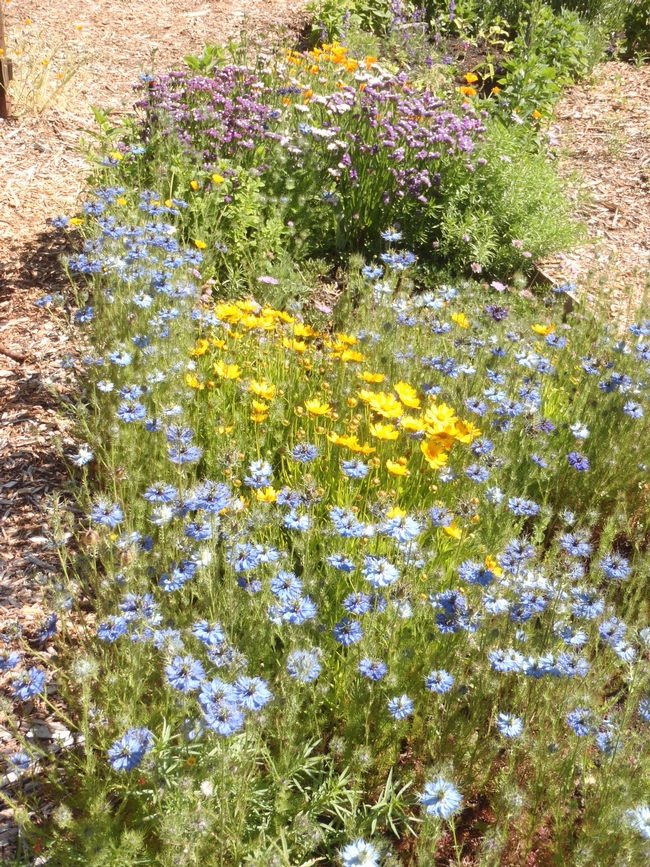
P5121512
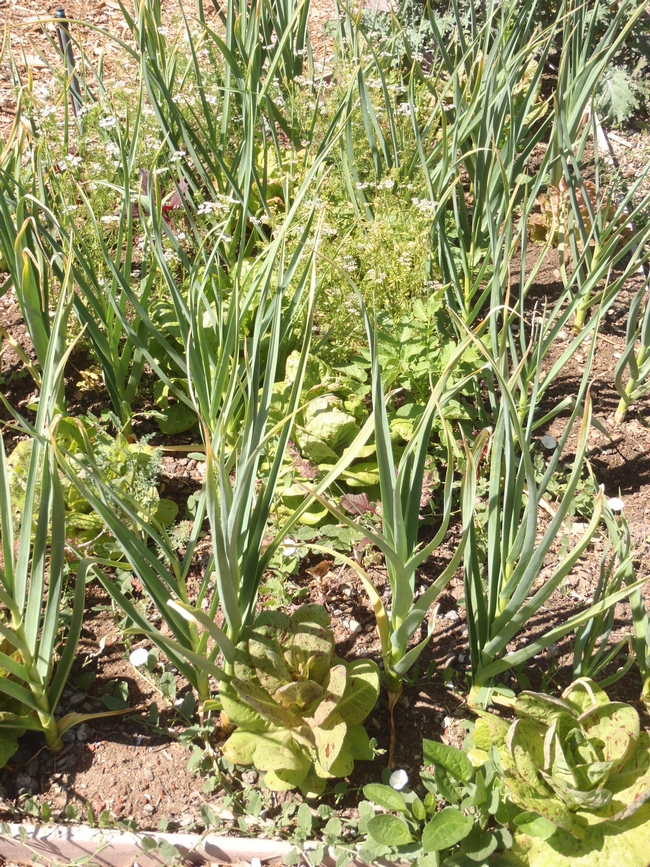
P5121514


